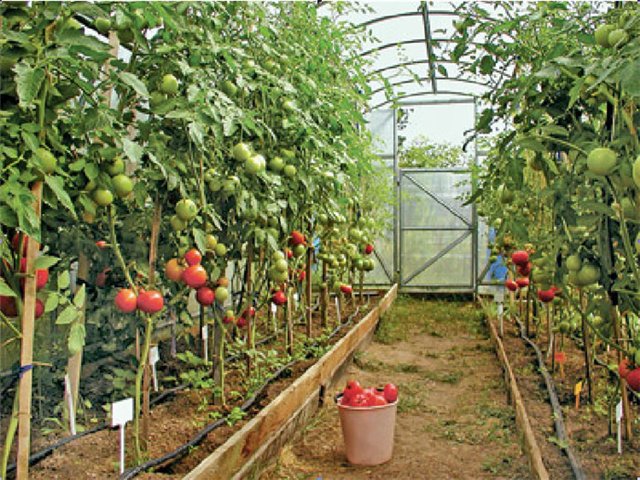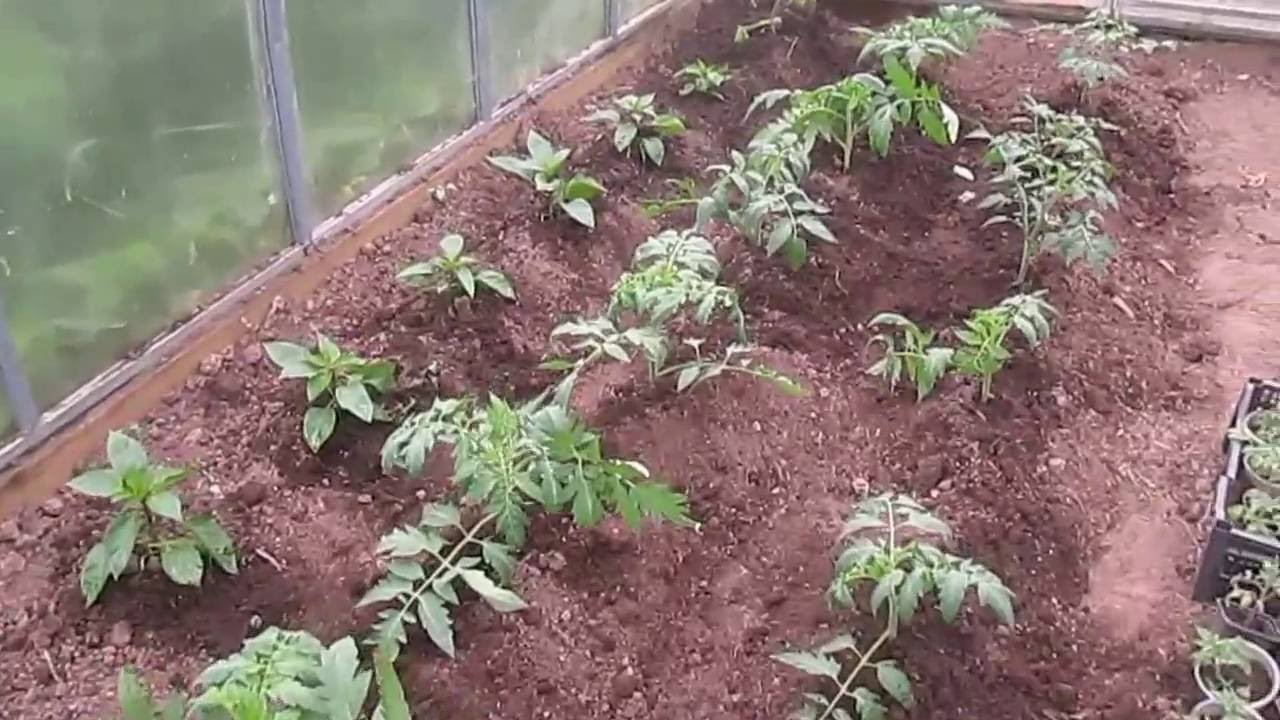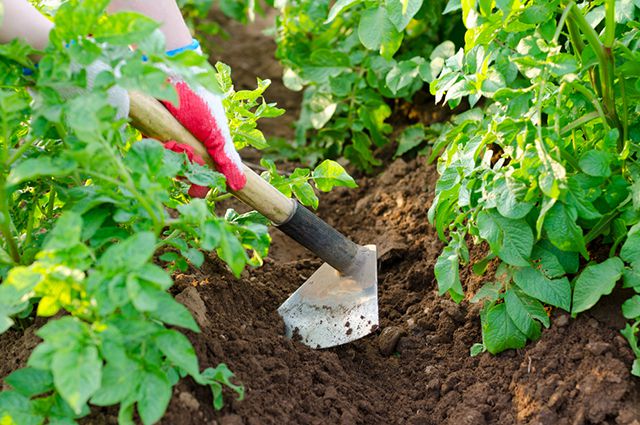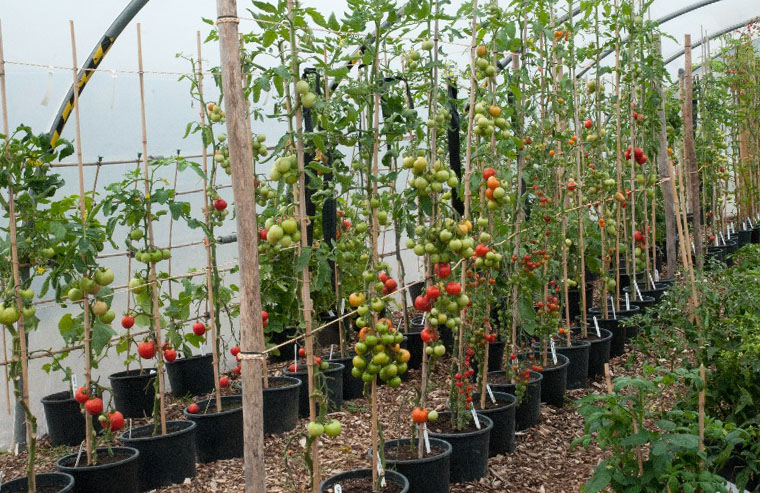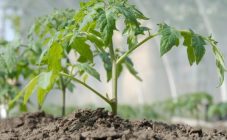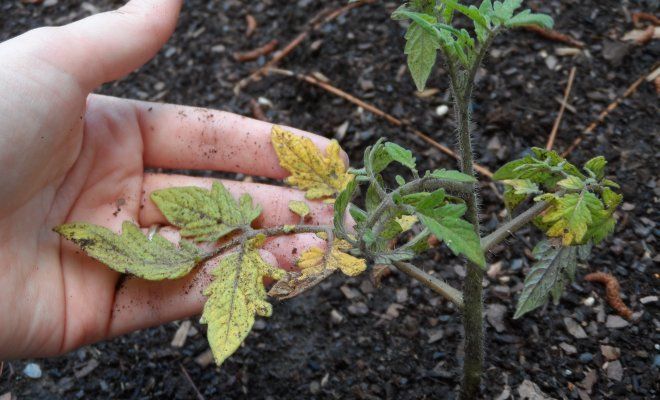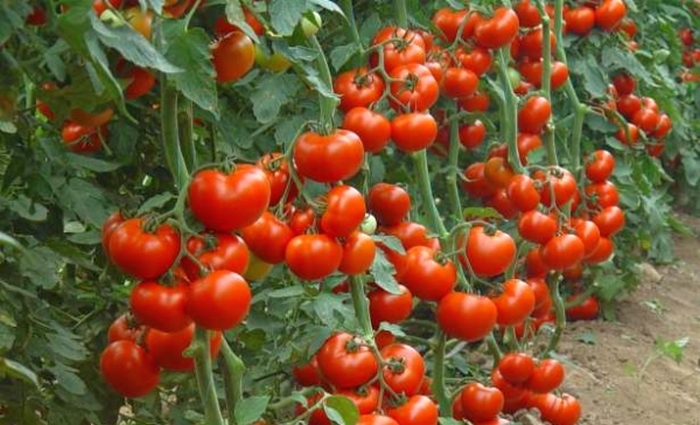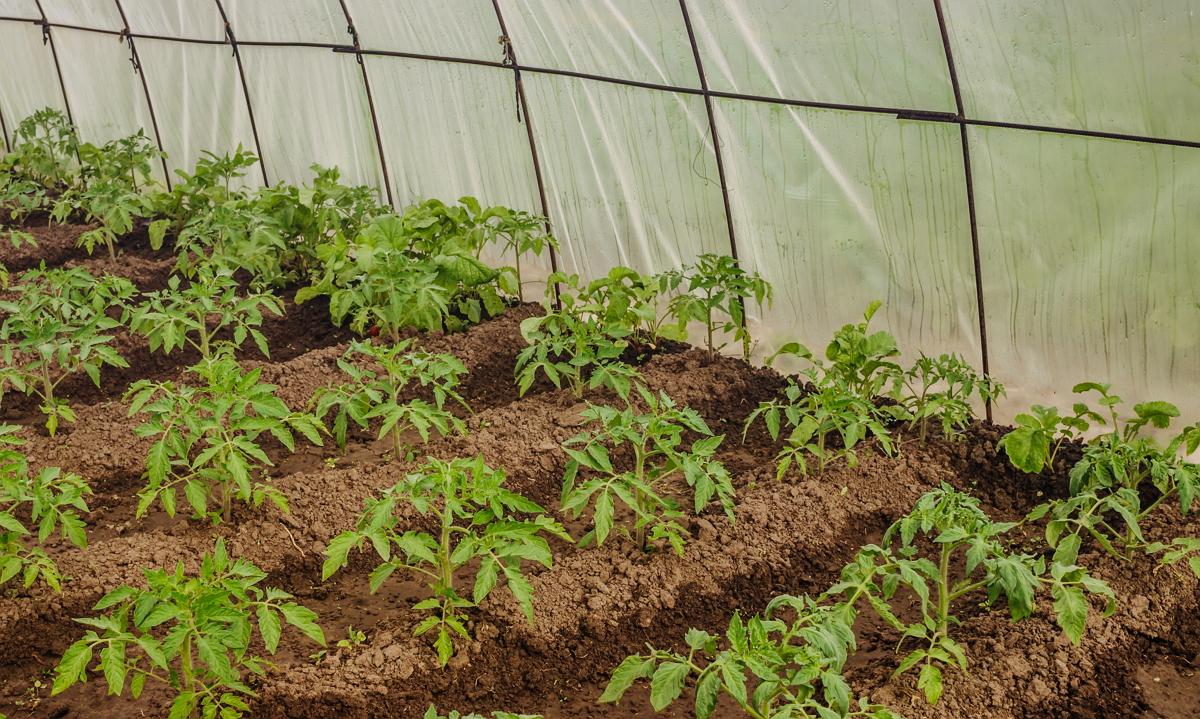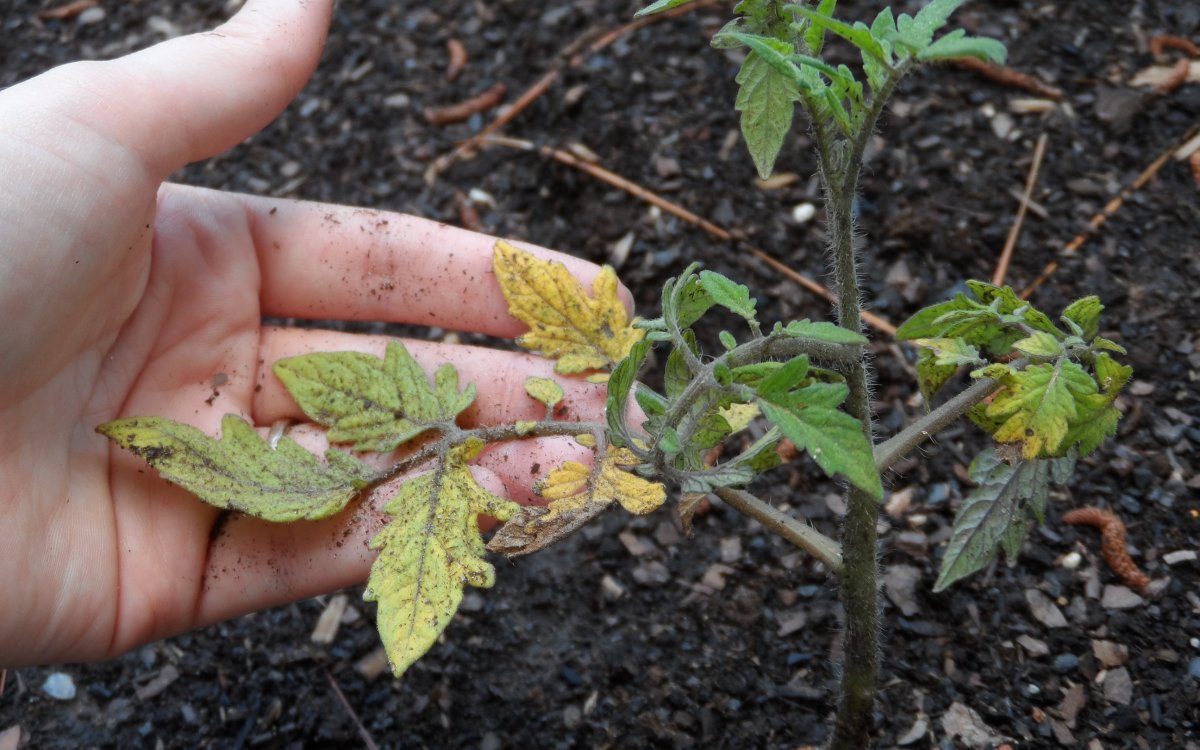Content:
Accurate adherence to cultivation techniques is the key to obtaining a decent tomato harvest. One of the methods of crop cultivation is the hilling of tomatoes in a greenhouse and in open soil. In order to get the effect of it, you need to know well how to loosen tomatoes correctly.
Basic culture description
Tomatoes are a vegetable crop from the Solanaceae family, widespread in our country and around the world. The fruits of the plant are a berry with high palatability. The root system is highly ramified and lies deep. The stem grows from 30 to 200 cm.
Brief rationale
Hilling tomatoes is usually classified as optional agrotechnical measures. Many summer residents and gardeners try never to resort to it during the season, because they do not see the benefit in this. However, tomatoes generally respond well to hilling. The growth and development of the bushes is accelerated. Plants begin to bloom better, become strong, powerful, fully developed, form a plentiful and high-quality harvest. Positive results are manifested when carrying out the procedure not only in the open field, but also in greenhouse and hothouse conditions.
Benefits of the procedure
Hilling tomatoes with timeliness and correctness has a positive effect on the culture, in particular:
- protects the bush and root system from the adverse effects of the weather and climatic environment;
- makes the stem stronger and more stable, does not allow it to bend or break under its own weight and harvest, makes it possible to do without the necessary garter for undersized varieties;
- improves the supply of oxygen to the roots, without which they will not be able to fully grow and develop;
- reduces the risk of fungal diseases affecting bushes and damage to them by pests, which develop better in conditions of waterlogged and poorly air-saturated soil;
- stimulates the formation of additional roots, which contributes to the entry of more nutrients into the bush and the preservation of a significant number of ovaries;
- promotes soil drainage and counteracts the stagnation of moisture in the soil, which is poorly tolerated by tomatoes, leads to decay and death of the root system, makes the fruits watery, devoid of taste;
- improves the heating of the soil by the sun's rays;
- reduces the number of weeds on the plot due to their damage during the hilling period.
Hilling tomatoes during pinching allows them to take root. Due to this, it is possible to increase the area occupied by the crop and harvest a larger crop.
Timing and frequency of hilling
In order to understand whether it is necessary to huddle tomatoes, and to determine the timing of the procedure, it is recommended to focus on the external signs and the general condition of plants in greenhouses or on a plot. If you look closely at the bushes, you can find small white bumps near the base of the trunk. They represent an emerging additional root system in its infancy. This organ is formed in cases where the culture is deficient in nutrients. The appearance of such a symptom gives a signal of the need for an early hilling.
Most often, the time of the first hilling occurs one and a half to two weeks after planting the plants in the ground. By this time, the seedlings are usually already quite well adapted to growing conditions.
Some time after planting and hilling, the base of the bush trunk will be covered with a bluish tint. This is a signal that the additional root system continues to develop normally and has begun to grow. Tomatoes should be spud during this period, as this will benefit the plant.
Usually, two procedures per season are enough for tomatoes, and too frequent hilling is not recommended. Nevertheless, if additional roots continue to form, then the action is carried out over and over again until the final formation of the additional root system is completed.
Hilling in the greenhouse
The question whether it is necessary to huddle tomatoes in a greenhouse or polycarbonate greenhouses should be answered positively. Before proceeding directly to the procedure, the soil must be spilled abundantly. The need for this is due to the fact that particles of dried soil can injure the roots and the aboveground part of the culture. Irrigation is recommended to be carried out one day before hilling.
The soil around the bush is carefully scooped up to the stem base and a small hill is made of it no more than 8-10 cm high. For this, it is recommended to use a small special garden rake or a hoe.
If there is not enough soil in the greenhouse to complete the process, you should add nutrient soil from another part of the garden. In this situation, the earth is poured around the bush to the required height.
Hilling tomatoes in the greenhouse is often complicated by the fact that the loose and well-structured soil in the greenhouse falls off the mound, thereby exposing the young roots. To prevent this from happening, you should install special props made of pieces of plywood or slate. A good solution in this case is the use of roofing material. From the material, you can cut pieces of the required size, which are rolled up in the shape of a cylinder and placed around the bushes. In such conditions, it is very convenient to control the height of the embankment.
Hilling in the open field
In an open plot, pre-wetting of the soil plays an even more important role. It is necessary to water it for at least two days, or you can spud the tomatoes after the heavy rain stops.
You need to know exactly at what distance the tomatoes are loosening. It is about 20 cm from the plant. The soil is carefully scooped up to the bush. Care must be taken not to damage the roots in the process.
When raking the soil, it is recommended to make shallow grooves in the soil near the mound. During watering or precipitation, moisture will accumulate in these depressions, which will keep the soil in a slightly moist state for a long time, which will allow the culture to endure dry conditions without problems.
It is better to huddle early in the morning or in the evening. The weather should be cloudy if possible. Such conditions will allow the bushes to adapt more easily and quickly to the renewed growing conditions.
Growing without hilling
In some cases, it is allowed to cultivate tomatoes without raking the soil near the stem of the bushes. To do this, you need to make sure that the plants are fully developed and do not need additional nutrition. This can be established by the following criteria:
- powerful developed stem without root buds;
- good, abundant flowering;
- bright green foliage without signs of chlorosis;
- a large number of fruit ovaries.
In order to achieve such success, it is necessary to feed the plants competently and in a timely manner, as well as observe all other agrotechnical recommendations. However, hilling will always benefit the culture.
The effect of hilling tomatoes is not only about improving nutrition. This procedure should gain more and more importance among summer residents and gardeners.
